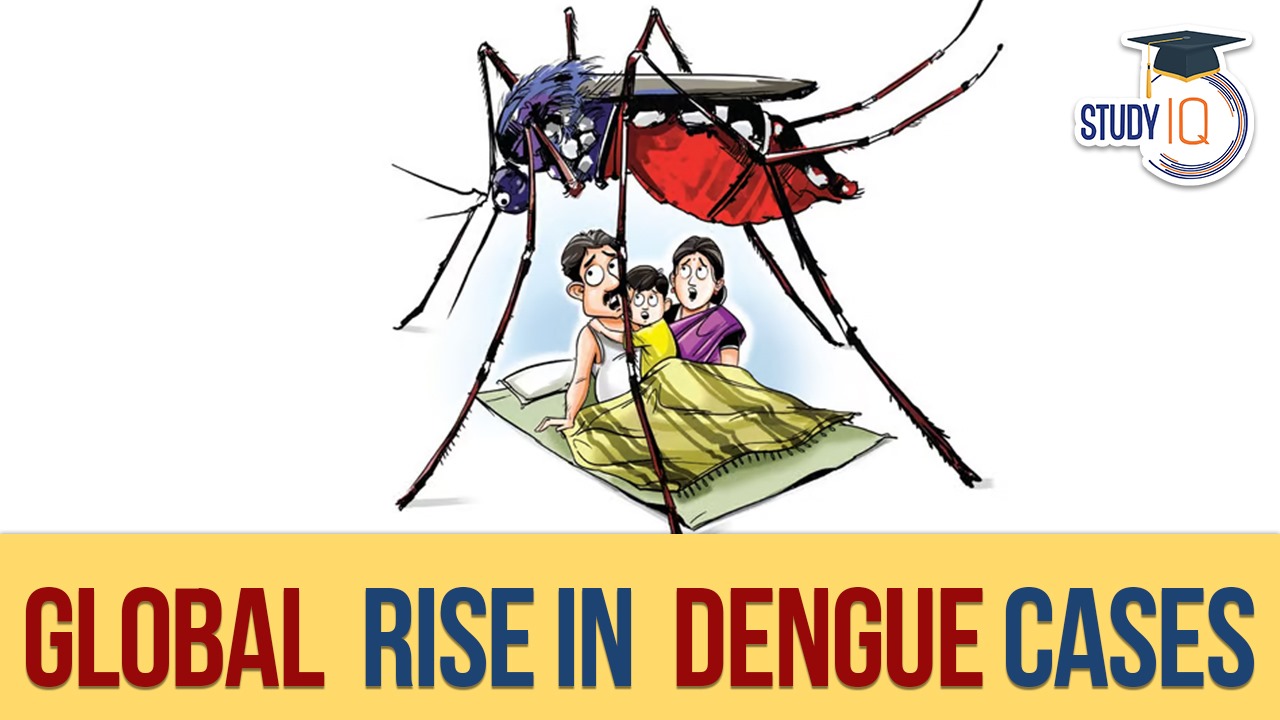Table of Contents
Context: Dengue cases have surged in India, with significant increases in Karnataka, Kerala, and Tamil Nadu.
| Current Statistics |
In India:
Globally: According to the World Health Organization (WHO):
|
Contributing Factors
- Monsoon Season: At least five countries, including India, are experiencing monsoon season, creating suitable conditions for Aedes mosquito breeding.
- Urbanization and Population Movements: Key factors in the increasing burden of dengue.
- Climate Change: Inducing shifts in weather patterns that affect vector-host interactions.
Dengue Transmission and Treatment
- Transmission: Dengue virus is primarily transmitted through the bite of infected Aedes aegypti mosquitoes.
- Most cases are asymptomatic or mild; severe cases can include shock, severe bleeding, or organ impairment.
- Symptoms:
- Acute febrile illness lasting two to seven days.
- Headache, retro-orbital pain, myalgia, arthralgia, rash, and hemorrhagic manifestations.
- Treatment:
- Managed through symptomatic and supportive treatment, particularly in those without warning signs or complications.
- Prevention: Dengue vaccine (CYD-TDV or Dengvaxia) is available (US approval: 2019).
Emerging Patterns in Dengue
- The first epidemic of clinical dengue-like illness was recorded in Madras in 1780.
- Dengue virus was isolated in India in 1945, with the first evidence of dengue fever reported in 1956 from Vellore district, Tamil Nadu.
- Tamil Nadu has experienced dengue outbreaks every five years, with the last outbreak in 2017.
- Seasonal Variation:
- Seasonal variation every five years due to the buildup of susceptible populations.
- Continuous cases throughout the year, with spikes if control measures are delayed.
- Public Health Measures:
- Surveillance and immediate response are critical.
- Community empowerment and education are essential to control outbreaks.


 Utkal Divas 2025: Odisha Foundation Day ...
Utkal Divas 2025: Odisha Foundation Day ...
 List of Military Exercises of India 2024...
List of Military Exercises of India 2024...
 GPS Spoofing and Its Impact in India: A ...
GPS Spoofing and Its Impact in India: A ...





















